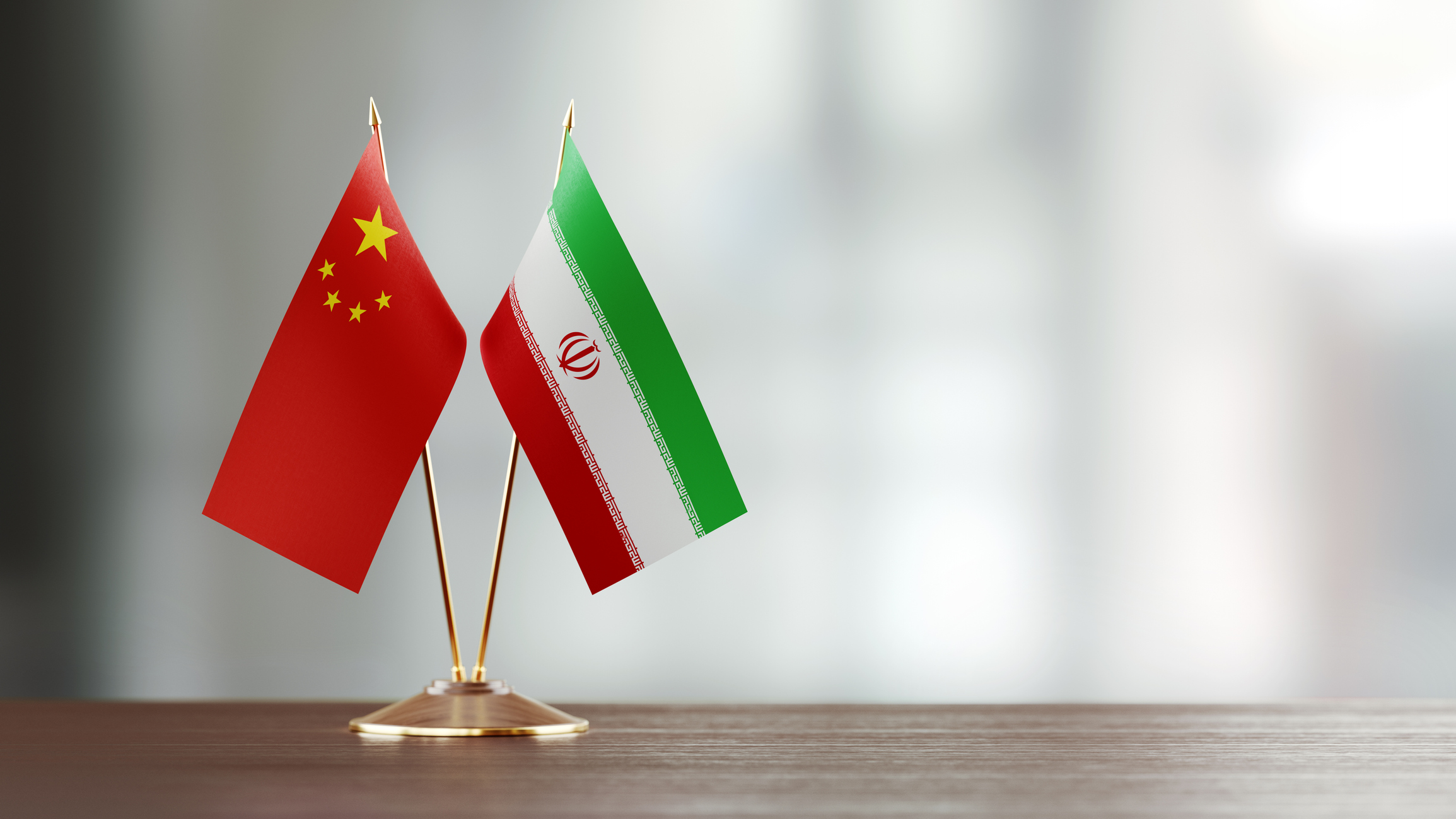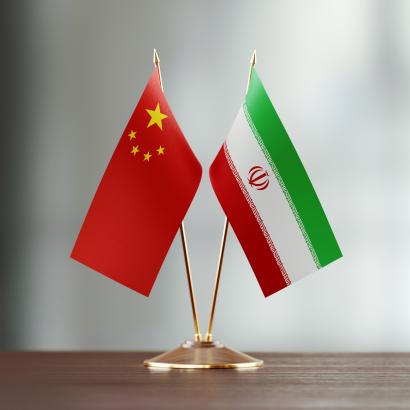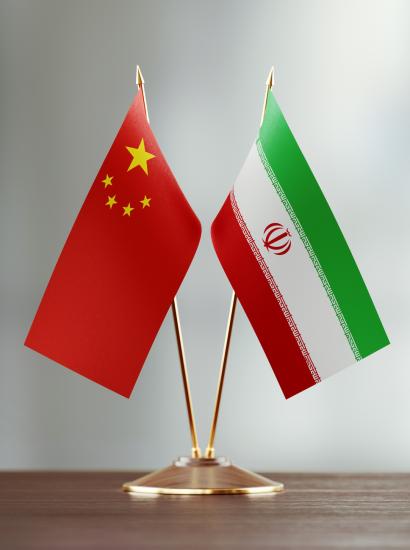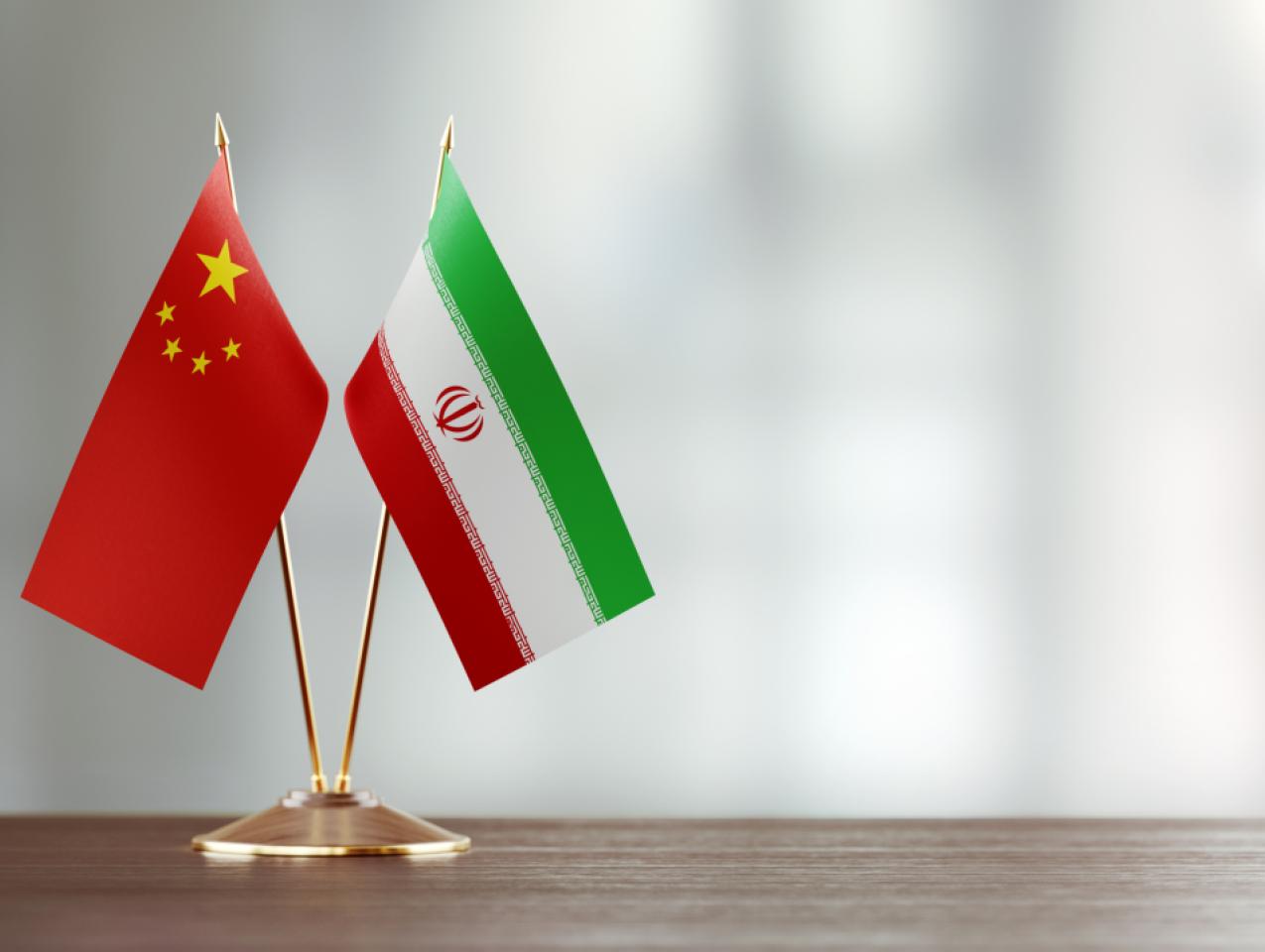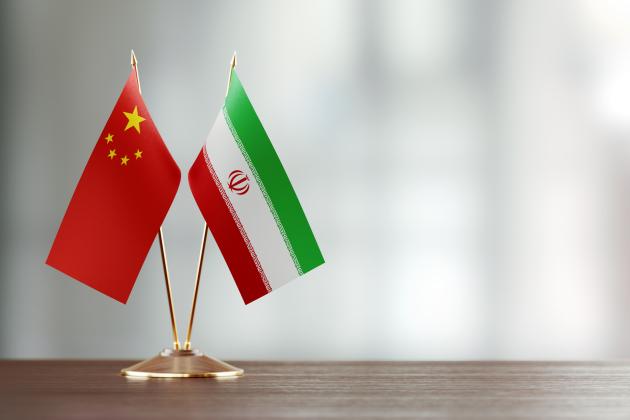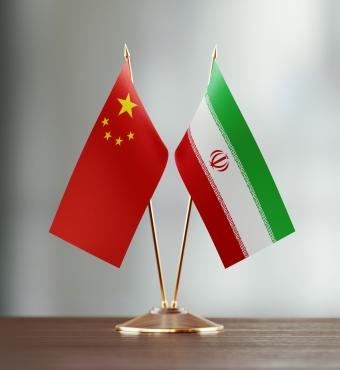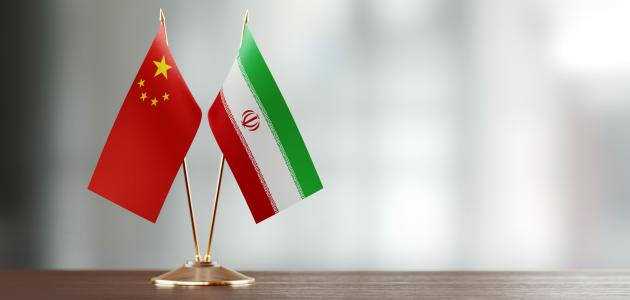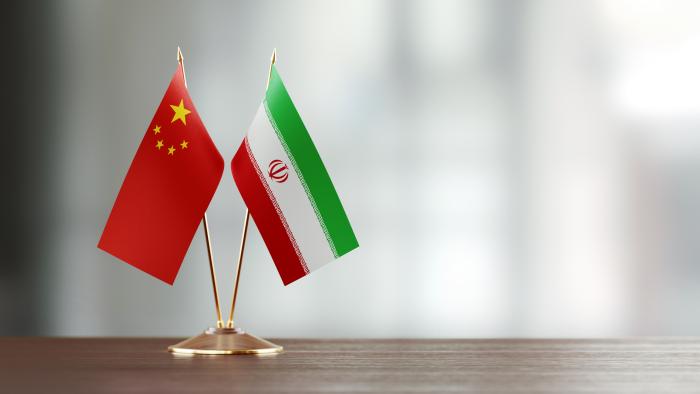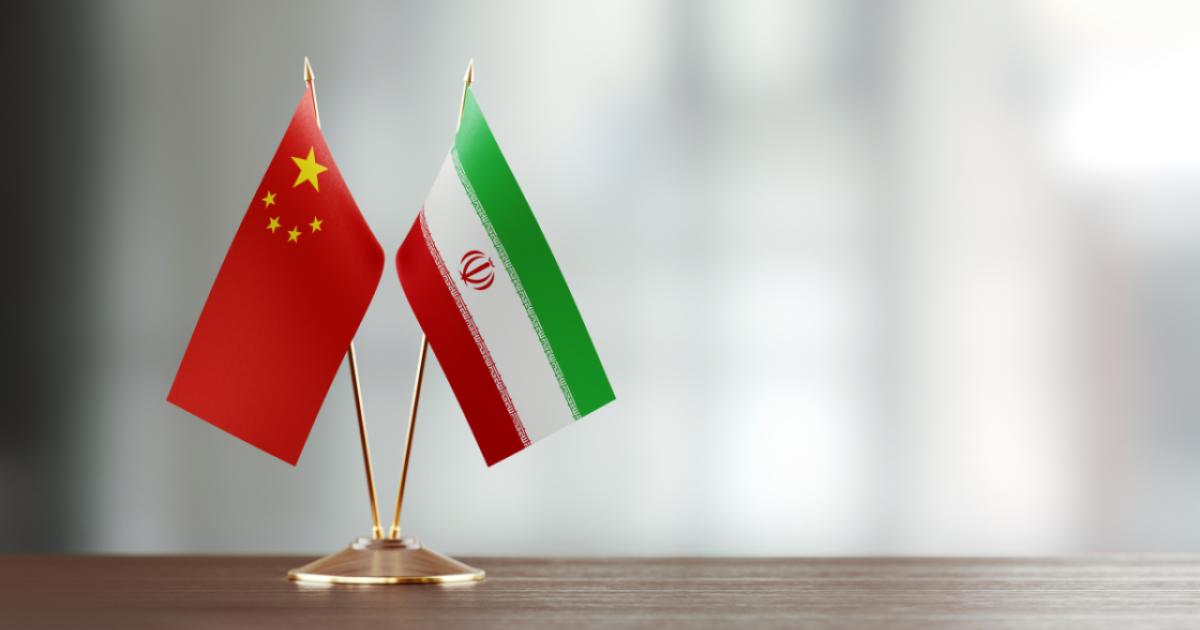- International Affairs
- Key Countries / Regions
- Middle East
- China
- Security & Defense
- US Defense
- US Foreign Policy
- Politics, Institutions, and Public Opinion
- Revitalizing History
China does not have a fixed Iran doctrine. And Iran does not have a historic China doctrine, as it usually places its geostrategic emphasis on the Middle East, the United States, and Europe. But the two revolutionary regimes are coming together. Iran now serves as an important part of China’s overall strategic approach to world affairs, an approach that is fundamentally determined by an orthodox Marxist-Leninist understanding of international power dynamics.
The People’s Republic of China (PRC) under the Chinese Communist Party (CCP) envisions an epic struggle on a global scale between the international anti-communist forces, led by the United States, and the global socialist cause, led by the CCP since the demise of Communism in the former Eastern bloc under the Soviet Union. This basic understanding of the struggle has led to the development of a deeply-held strategic paranoia in Beijing. The Party has inculcated a peculiar set of doctrinal principles that place the CCP at the center of a well-coordinated international containment scheme designed to stifle the CCP from carrying out its historic socialist mission to its logical and ideological conclusion.
According to all core CCP leaders, from Mao Zedong, to Deng Xiaoping, to Jiang Zemin, to Hu Jintao, to Xi Jinping, the CCP must implement a series of measures at any cost to counter the anti-communist containment, and survive and eventually triumph as the leader of a new model of global governance. Two of these measures now involve Iran: the strategies of breakout and diversion.
The CCP’s containment breakout strategy draws its ideological inspiration from one of the core Leninist tenets – the theory of the Weakest Links of international capitalism. According to Lenin, international anti-communist forces since the beginning of the 20th century form a complete chain of capitalist countries and regions. Some links of the chain are strong - these are the most advanced industrial capitalist democracies, like the United States and the United Kingdom. But other links, such as those in the less developed parts of the world, are the weakest links of international capitalism. The breakout theory holds that communists should concentrate on breaking the enemy’s weakest links first.
The latest iteration of CCP’s Leninist breakout solutions is an ambitious undertaking called the Belt and Road Initiative (BRI). This Initiative was designed by General Secretary Xi Jinping and adopted by the Party in 2013 to break out of containment into areas that are least influenced by the leading anti-China powers.
The original BRI plan stipulates two main routes: The Central Asian nations would form the land route, or the “belt.” The Indian Ocean region, from the Andaman Sea, through Sri Lanka, the Arabian Sea, the Persian Gulf, the Gulf of Aden, the Red Sea and the Indian Ocean regions of coastal Africa, would become the maritime route, or the “road,” taken from the more poetically named Maritime Silk Road.
The Islamic Republic of Iran occupies a crucial position in this plan, as it is the only major country that connects the belt and the road. As such, in the original BRI blueprint, Iran is a must-get country for the CCP in order to make the breakout project viable and successful.
Coupled with the breakout program is the CCP’s diversion strategy, which is now a seasoned practice in Beijing. Diversion involves buttressing all the rogue regimes that are arch-enemies of the U.S. and its allies in order to divert America’s strategic assets and policy focus and to drag the U.S. into one quagmire after another in areas outside of China. Guided by this thinking, China has, for decades, been a major supporter – both through overt and covert means – of many rogue regimes. Its clients have included North Korea, North Vietnam, Cuba, Venezuela, the Palestine Liberation Organization, and of course, Iran. It is against the CCP’s interest to see the collapse of rogue regimes like Iran in its overall struggle against the United States. The U.S. played the China Card during the Cold War against the Soviet Union, and now the CCP has been adroitly playing the Iran Card against the U.S. and its allies.
The Iran Card’s greatest manifestation is now the Chinese-Iranian Comprehensive Strategic Partnership (CSP). The CCP has for years courted Tehran to form this partnership on a gigantic scale, promising vast investments in Iran’s key industries, infrastructure, economic, and financial sectors, thus creating a preponderant dependency on Beijing.
But bringing Iran into Beijing’s geostrategic orbit has proven to be difficult in recent years for a number of reasons. Despite its utility for Beijing as a leading rogue regime, Iran is heavily sanctioned by the international community, especially by the U.S. The CCP’s entreaties to Iran could not possibly be fulfilled without Beijing suffering an enormous reputational and real punitive cost.
The 2015 Joint Comprehensive Plan of Action (JCPOA) changed that calculus. It provided the Iranian regime a lifeline when the international sanctions eased. The CCP lost no time in wooing Iran. Immediately after the ill-designed JCPOA took effect, and six days after the U.S., EU and UN sanctions relief was certified, General Secretary Xi Jinping became the first international leader to visit Tehran after the sanctions removal and overwhelmed the Iranians with a Chinese-Iranian Comprehensive Strategic Partnership proposal. The CCP seemed delighted to be able to grab one of the most important pieces of the BRI plan without major reputational and punitive consequences.
But the election of Donald J. Trump in 2016 blunted China’s Iran plan. As promised, the Trump administration resolutely withdrew from JCPOA, enacting maximum pressure on Iran in an effort to force the Iranians to give up their nuclear ambition, vowing sanctions against any sovereign governments or companies doing business with Tehran, and removing sanction waivers for countries buying Iranian oil.
For the CCP, this sudden turn of events was a devastating blow. It turned to covert business dealings with Iran through some of China’s major state-controlled conglomerates, such as Huawei and ZTE. The world would soon learn that the U.S. would inflict heavy sanctions on Huawei for its illicit dealings with Iran via phony front companies in places like Hong Kong. Upon the request from the U.S. Justice Department, Canada would arrest Huawei’s CFO for her involvement in Huawei’s covert Iranian deals. The U.S. government has also filed lawsuits against Huawei and engaged in a global campaign against Huawei’s attempt to control critical global telecommunications networks.
The CCP’s Iran plan also met domestic resistance in Iran. Many Iranians have deep and serious worries about Beijing’s motives, and they are concerned about Chinese infringement on Iran’s sovereignty and independence.
In addition, some prominent Iranian officials are deeply suspicious of the CCP’s promiscuous relationships with Saudi Arabia and Israel – their chief regional enemies. It is not surprising, therefore, that Xi Jinping’s January 2016 grand proposal for a Comprehensive Strategic Partnership stirred up passionate debates within Iran’s ruling elite. Some leaders, such as former president Mahmoud Ahmadinejad, were opposed to the partnership, arguing it would lead to the loss of Iranian sovereignty. To make matters worse for Beijing, the Iranian government kept the Chinese proposal largely secret in an attempt to minimize internal division.
That secret was revealed in June 2020, more than four years after Xi’s visit. Iranians were stunned to learn more details of the long-term, gigantic CCP proposal. The partisan tenor of the debate grew fiercer, gathering overwhelmingly negative views from the Iranian public. For a time, it seemed certain that the CCP’s proposal was dead.
The election of Joseph Biden in November 2020 reversed the fortunes for the Iranian and Chinese governments, and for their partnership. Vigorous negotiations on the details of the proposal immediately were re-started, as the new American administration vowed to go back to JCPOA, thus dialing down the pressure on both Tehran and Beijing.
With the new lifeline thrown from Washington, Iran and China are emboldened to move ahead. After five years of a long journey, a near-dead, historic Chinese-Iranian Comprehensive Strategic Partnership agreement was finally signed in Tehran by the Iranian foreign minister, Javad Zarif, and the PRC foreign minister, Wang Yi, on March 29th, 2021. It took just seven weeks from the Biden inauguration for the ink to dry on the deal.
The Chinese-Iranian CSP is ambitious and profound. According to the signed document, the CCP is obligated to invest a whopping $400 billion in Iran over the next 25 years. If even partially realized, these Chinese investments would encompass Iran’s banking, telecommunications, ports, railways, public health and information technology sectors. In return, Iran would guarantee oil supplies to China at a fixed and favorable rate. The CSP would also enhance bilateral cooperation in joint military drills, weapons development, and intelligence sharing.
What does the CSP mean for the U.S.? The CSP will test the Biden Administration’s resolve in solving the Iranian nuclear problem. With China’s massive infusion of economic aid and the guaranteed payments in exchange for the guaranteed supply of Iranian oil, Iran will be less likely to comply with the will of the international community to ditch its nuclear programs. China’s move fulfills Beijing’s strategic wile of diversion to keep the U.S. bogged down in a prolonged quagmire in Iran, and possibly the entire Middle East, as a more financially stable Iran will even more actively sponsor terrorism and rogue actors in the region.
Washington’s determination to carry on its various Iran-specific sanction regimes is being tested. To meet this moment, the U.S. should not relent on inflicting maximum pressure on Iran and, as needed, on the PRC. It should unequivocally warn the CCP against its illicit economic, infrastructure, financial and IT dealings with Iran and promise punishments if the U.S. sanction regimes against Tehran are violated. The U.S. should also work more closely with Russia and Israel to reduce or even stop the CCP and Iran’s collaboration on BRI projects, as well as on military and intelligence operations. Finally, the U.S. should stand with the Iranian people, who are deeply concerned that the CSP is just another attempt by Beijing to erode the sovereignty of independent nations, from the CCP-Sri Lanka deal all along the Belt and Road.
Miles Yu is the Robert Alexander Mercer Visiting Fellow at the Hoover Institution. He served in the Trump Administration as the principal China policy and planning adviser to Secretary of State Mike Pompeo.







